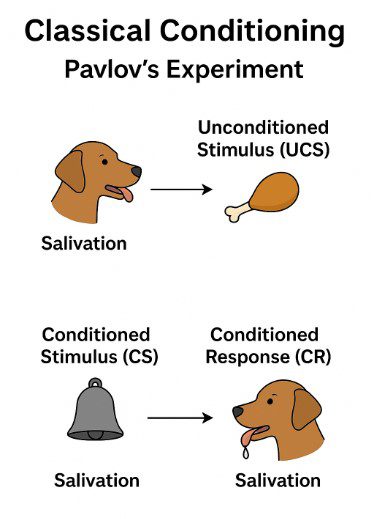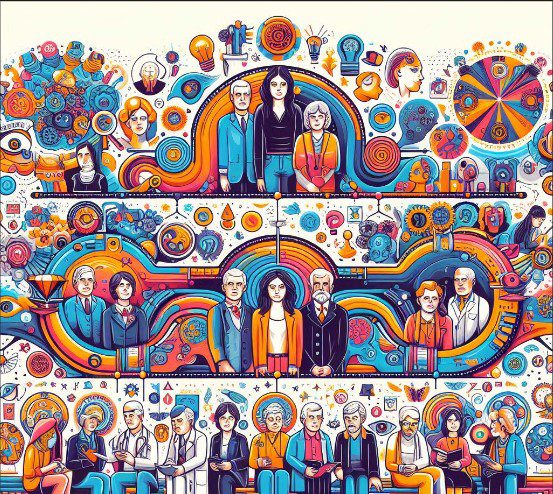Classical conditioning is a type of learning in which an organism learns to associate a previously neutral stimulus with a stimulus that naturally produces a response. This form of learning was first described by Ivan Pavlov, a Russian physiologist, in the early 20th century.
Here’s an explanation using Pavlov’s famous experiment:
Pavlov’s Experiment:
-
Natural Reflex: Pavlov studied dogs and observed that they naturally salivate when food is presented. Here:
-
Unconditioned Stimulus (UCS): Food
-
Unconditioned Response (UCR): Salivation (automatic response to food)
-
-
Neutral Stimulus (NS): Pavlov then introduced a neutral stimulus, such as the sound of a bell, which initially had no effect on salivation.
-
Association Phase: Pavlov repeatedly rang the bell just before giving the food to the dogs. Over time, the dogs began to associate the bell with the upcoming food.
-
Conditioned Response: Eventually, the dogs started salivating just to the sound of the bell, even when no food was presented. Here:
-
Conditioned Stimulus (CS): Bell
-
Conditioned Response (CR): Salivation (learned response to the bell)
-
Key Concepts:
-
Acquisition: The process of learning the association between the NS and UCS.
-
Extinction: If the bell is repeatedly rung without food, the salivation response gradually disappears.
-
Spontaneous Recovery: After a rest period, the conditioned response may reappear when the bell is rung.
-
Generalization: The dog may also respond to sounds similar to the bell.
-
Discrimination: The dog can learn to distinguish between the bell and other sounds, responding only to the bell.
Related Concept: Operant Conditioning
In simple terms, classical conditioning demonstrates how a neutral stimulus can elicit a response after being repeatedly paired with a naturally significant stimulus. Pavlov’s work laid the foundation for behaviourism and the study of learning in psychology.
Societyopedia is trying best to provide users the clear and easy to understand concepts. Stay tuned.


